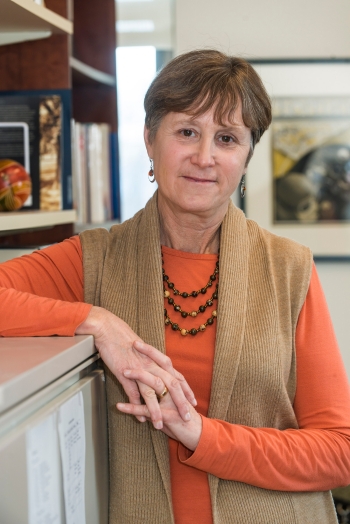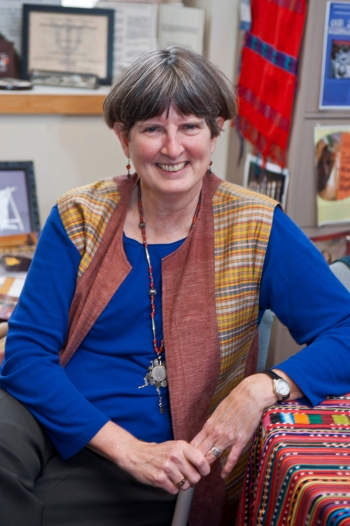
By
Immigration and immigrants – whether from Mexico, Syria or elsewhere – have been a constant topic of discussion and debate this year among politicians, media commentators and the general public. Two new books published by Boston College faculty, heralded last month at a book launch sponsored by the Center for Human Rights and International Justice (CHRIJ), explore different facets of the life of the immigrant in the US and in the Boston area, and both present a reality that is counter to many media soundbites.
In The New Bostonians: How Immigrants Have Transformed the Metro Area since the 1960s, History Professor Marilynn Johnson looks at how the large-scale immigration from Latin America, Asia and Africa that followed after the passage of the Immigration Act of 1965 helped to transform the city of Boston.
According to Johnson, an urban historian, the late 1960s to the early 1980s was a low point for Boston in terms of economic development and population. “The city saw losses of both people and industry. Boston lost about a third of its population between 1950 and 1980 and lost some 40 percent of its manufacturing base in the 25 years after World War II. It was a city that had a lot of problems.”
The 1980s saw Boston undergo an economic and physical revitalization, said Johnson, who set out to explore the relationship between the Boston renaissance and the new waves of immigrants.
“Although there were many things that went into the making of Boston’s renaissance, one of the least appreciated is the role that immigrants played as a key ingredient. As both workers and residents, they helped to repopulate and revitalize neighborhoods and inner suburbs. It’s a story that really needs to be told.”
The “old immigrants” to Boston were mostly from Europe and Canada and were primarily unskilled and semi-skilled workers. The “new immigrants,” explains Johnson, are from all skill and education spectrums, with a significant amount representing the professional category. In 2010, three-quarters of the foreign-born in Boston represented more than two dozen countries, including China, the Dominican Republic, Haiti and other Latin American, Caribbean, Asian or African nations.

“So the new immigrants have made Boston more diverse racially, ethnically, and through their educational and professional backgrounds,” said Johnson.
The integration of the new Bostonians has not been without incident, noted Johnson. “The 1980s were the cross-currents coming together between the earlier period and the period we live in now.”
Johnson cited the large refugee migrations, lingering bitterness over the Vietnam War and the displacement of the native-born population over the loss of manufacturing jobs as converging to cause tension, resentment and violence, with immigrants serving as the scapegoats.
Johnson plans to expand her research to a digital platform, tentatively titled Global Boston, which would include information that didn’t make it into the book, oral histories and other historical sources. “There are a lot more stories to tell.”
The New Deportations Delirium: Interdisciplinary Responses, co-edited by CHRIJ associate directors Daniel Kanstroom and M. Brinton Lykes, takes a look at the impact of the 1996 Illegal Immigration Reform and Responsibility Act on the country’s immigrant population.
“The United States has been engaged in a massive social experiment with deportation,” said Kanstroom, a BC Law School professor. “We’ve created a system that is unprecedented historically in terms of its size, its scope and its harshness. The prevailing rhetoric is that there is no or insufficient enforcement going on, when in reality there is massive enforcement. The government is spending billions and billions of dollars and deporting hundreds of thousands of people.”
Many facing deportation are long-term legal permanent residents with “green cards,” who have US citizen spouses and children, according to the editors.

“That [deportation] mechanism separates families,” said Lykes, a professor in the Lynch School of Education. “Our policies and practices belie our rhetoric of the United States being family-oriented.”
The interdisciplinary conversation and work Kanstroom and Lykes have engaged in through the CHRIJ highlighted for them the need to have experts from different fields to contribute to this volume. The New Deportations Delirium includes chapters from lawyers, judges, social workers, psychologists, educators, community activists, a filmmaker, and the former director of the Department of Homeland Security’s Office of Detention Policy and Planning.
One attorney writes of the inherent conflict he sees between family law and immigration law, because the welfare of the child is not a priority in both arenas. Other chapters are specifically collaborative between disciplines, including a chapter written by a social work professor and lawyer.
The New Deportations Delirium is “deeply infused by the voices of the migrants themselves,” added Lykes, who co-authored one of the book’s chapters. “What do we understand from their point of view and how can we re-theorize how we think about migration based on their lived experiences?”
In addition to students, Kanstroom hopes the book will reach policymakers and voters “who think they understand what deportation is and who, we hope, will come to understand how it actually functions. We tried to give a ‘ground-up’ perspective on the effects of deportation on real people, how the system has worked, its problems, its strengths, its weaknesses.”



